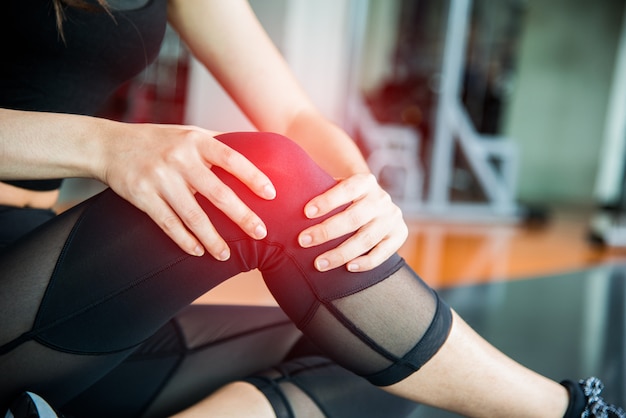Why does my knee hurt?
By Sam Davison, Principle Physiotherapist
Are your knees stiff and sore after your morning run or an F45 session? Whether you’re a professional, recreational or corporate athlete, many of you will have experienced knee pain at some stage and, boy, does it hurt! Our knees are integral for support and movement. They act as shock absorbers and help distribute the force we place on our legs with every step we take. Injuries occur due to trauma, overuse or chronic load.
Here at Barangaroo Physio, we not only look at the knee joint itself but also the hip and ankle joints. We do this because research shows that reduced mobility and strength in these areas greatly affects the knee joint. Our qualified team is equipped and experienced to get you out of pain quickly and rehabilitate a wide range of knee conditions and injuries, including:
- Knee osteoarthritis
- ACL injuries
- Meniscal tears and injuries
- Jumper’s knee
- Runner’s knee / ITB friction syndrome
- Patella tendinopathy
- Supra and Prepatellar bursitis
- Pre- & Post-op knee surgery (ACL reconstruction, ORIF, Meniscal repair, knee replacement)
- Ligamentous Injuries (ACL, MCL, LCL, PLC)
- Quadriceps and hamstring strains, tears and ruptures
- Patello-femoral pain

Knee pain often manifests itself in the following ways; a soreness in the knee, or a feeling of weakness and instability. Here are some ways a physiotherapist can help alleviate knee pain:
-
Increase Range of Motion
A stiff knee will cause pain and weakness. Increasing the range of movement can help ease the pain as well as improve functional activities such as sitting, standing or climbing stairs
-
Increase Muscle Strength
Pain, swelling and injury all cause muscle inhibition of the all-important quadriceps muscles and a feeling of weakness and giving way. The knee joint requires extensive muscle support, not only through the hamstring and quadriceps which have a direct attachment over the knee joint but also of all the muscles in the lower leg.
-
Strapping/Bracing
Sometimes taping or bracing the knee joint can facilitate recovery. This is often dependant on an individual’s injury, symptoms and function. We rarely brace a joint if avoidable, so any discussion about bracing should be with treating therapist.
-
Reducing Inflammation
We know that swelling is detrimental to movement and strength. Therefore, a Physio’s goal at the start of treatment is often to reduce the swelling and inflammation. There are a number of ways and means for Physios to do this.
-
Hands-on Treatment
The tissues around your knee joint can become tight and sore (particularly scar tissue) and affect the normal biomechanics of the knee joint. Your Physio can identify this through a thorough assessment and examination and release any tight structures.
-
Activity Modification
If you have a painful knee, Physios may need to adjust the force/load or stress on the knee joint to enable you to recover quicker. Your Physio will advise what activities will aggravate your symptoms and offer alternative solutions to optimise your recovery.
-
Rehabilitation Pre- and Post-Surgery
Depending on your operation, your surgeon will most likely suggest pre- and post-operative rehabilitation. Research shows us that the recovery times for patients who undergo rehabilitation before and after elective procedures is faster with help and guidance from their Physiotherapist.
Related Articles
May
May
Apr